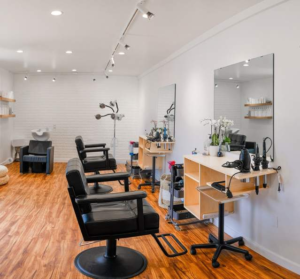Commercial roofs are large and structurally complex, requiring specialized techniques for installation and maintenance. A properly installed and maintained commercial roof acts as a protective shield against harsh weather conditions, fostering a safe, productive environment for businesses to thrive.
Roofing contractors with a thorough understanding of the commercial roofing process are well equipped to offer the best options for their clients. They stay up-to-date on the latest roofing systems and materials, and understand the benefits of each one. Click the Commercial Roofing Installations Erie PA to learn more.

Commercial roofing protects business investments and occupants from rain, snow, and other weather elements. The roof also helps keep interior temperatures comfortable and prevents pests from infiltrating the building. Regular inspections and maintenance are essential for the longevity of commercial roofs.
Unlike residential roofs, which are generally composed of asphalt shingles, commercial buildings typically have flat or low-sloped roofs made from single-ply membranes, concrete, steel, tar, and gravel. The installation and repair of these roofs requires a different set of skills, different materials, and larger projects than the roofs over residential homes.
Before starting any work, a professional roofing contractor should conduct a thorough inspection of the existing roof to identify structural issues and determine whether the structure can support a new roof. If necessary, the contractor will consult with the client to design a suitable system and select the appropriate materials. The roofer should also obtain all required permits and ensure compliance with local laws and safety standards.
Once the inspection and assessment are complete, the roof deck is prepared for the installation of new roofing materials. This process may include removing old shingles and other debris, priming the surface, and applying layers of new roofing material. Depending on the type of roofing system selected, the installers will use various tools and techniques to install the materials.
One sign that a commercial roof is in need of replacement is a spike in energy bills. This can be caused by poor Insulation, which causes the HVAC to overwork and consume more power. In addition, if water leaks from the roof are not promptly repaired, they can damage the internal structure of the building and create health and safety issues for occupants.
A commercial roof replacement is a substantial investment that can be expensive for the building owner. Choosing the right contractor is critical to ensuring that the project is completed properly and within budget. In addition to a fair estimate, the contractor should offer warranties and guarantees on their work. This shows their commitment to customer satisfaction and demonstrates that they are confident in their ability to perform high-quality repairs and installations.
Design and Planning
Commercial roofing provides essential protection for businesses and investments from the elements like rain, snow, and UV rays. Commercial roofs are designed for the specific needs of a property’s structure, function, and occupants, with consideration to budgets and regulatory compliance. It is important to work with a professional contractor who understands the unique challenges, materials, and processes involved in commercial roofing to protect your investment.
Whether your building has a flat or low-sloped roof, a good design and installation are key to preventing leaks and extending the lifespan of your roof. A professional roofer will take into account your property’s location and usage to determine which roof material is best suited for your business, and they’ll work with you to plan the most effective installation method.
Most commercial buildings have what are called low-sloped or flat roofs, but there are some properties that utilize a steep or pitched roof. Flat roofs are popular for their cost effectiveness, and they’re also ideal for maximizing space and accommodating mechanical systems or solar panels on the roof surface. Steep or pitched roofs require more maintenance, however, as they tend to leak more easily and are more prone to damage from heavy rain or hail.
There are a number of commercial roofing materials to choose from, each with different benefits and costs. Shingle roofs provide a traditional aesthetic, while metal roofs are a durable option that offers longevity and can withstand harsh weather conditions. Single-ply membrane roofs such as TPO and PVC are lightweight and flexible, with thermal efficiency and resistance to chemicals.
It is crucial to ensure that your commercial roofing project complies with all relevant regulations, including fire safety and accessibility standards. This can be complex, but it’s a vital part of ensuring your building is safe for occupants and visitors. Choosing a professional commercial roofing contractor will help to prevent complications that can lead to fines, legal action, or even the closure of your business. During the planning phase, a qualified contractor should be able to provide you with documentation and warranties that help to demonstrate their expertise and professionalism.
Installation
Commercial roofing systems are made of a variety of materials, but most consist of a single-ply membrane (TPO, PVC, EPDM), concrete, modified bitumen, or built-up roof system (BUR). These different types of systems have unique benefits and purposes for the structure’s owners. They also have a number of installation and maintenance requirements that are atypical to residential properties.
Commercial roofs are often larger than residential ones and may feature more complex slopes, curves, and penetrations. This makes them more challenging to install and maintain. A qualified roofing contractor can help you choose the best roofing system for your property’s needs and provide you with a comprehensive installation plan.
When selecting a roofing contractor, be sure to ask for a list of references and testimonials from past clients. You can also inquire about their licenses, insurance coverage, and warranty policies. A reputable roofing company will be able to provide you with a professional written in-depth proposal that includes the project timeline, material costs, and an itemized breakdown of work to be completed.
In addition to ensuring quality workmanship, a roofing contractor should be knowledgeable about local building codes and safety regulations related to commercial structures. They should also offer a maintenance program that includes regular inspections, gutter cleanings, and prompt repairs of small issues to reduce the risk of major damage.
A properly installed, well-maintained commercial roof protects business operations and adds resale value to the building. It also helps with energy efficiency, lowering operating expenses and utility bills over time.
Commercial roofing is a highly specialized field, and only experienced professionals should be trusted to handle installation, repairs, and maintenance. A dependable roofing company will ensure quality workmanship and compliance with regulatory guidelines to protect your investment and minimize liability. By choosing a knowledgeable contractor, you can rest assured that your new roof will stand firm against heavy rains, wind, and heat for years to come. Properly installed commercial roofs increase the resale value of your property and provide a sturdy barrier against harsh weather conditions, protecting your investments, employees, and customers.
Maintenance
Commercial roof maintenance is an important component of preserving the value, efficiency and structural integrity of the building. Scheduled inspections, prompt repairs and preventive measures are essential components of extending the lifespan of the roofing system. The type of roof and the structure of the building are important factors to consider when choosing a contractor for maintenance services.
Choosing a licensed and insured commercial roofer is an excellent way to protect the investment and ensure that the job will be performed correctly. Reputable contractors offer warranties on their work and provide ongoing maintenance to uphold those guarantees. The contractor should also be able to recommend the best materials for each situation based on the building’s location, usage and weather conditions.
Regular roof inspections can catch small problems before they escalate, such as water spots on ceilings that indicate leaks. Leaks, mold growth and rust can deteriorate the building’s interior, increasing energy costs and creating health hazards for building occupants. In Greensboro, routine maintenance includes clearing debris from gutters and downspouts to avoid clogging, promoting drainage system performance and prolonging the life of the roof.
Proper maintenance also involves addressing existing issues to prevent the need for costly repair and replacement. Damaged or worn commercial roof materials and inadequate insulation can result in high energy bills and an unattractive appearance. It is advisable to hire a professional to conduct an in-depth commercial roof inspection and address any existing problems as soon as possible.
When choosing a contractor for commercial roof maintenance, it is important to consider their qualifications and experience. Licensed and insured roofers offer assurance that their work will comply with local codes and regulations. In addition, their experience with commercial roofing will help them address any challenges that may arise during the project.
It is a good idea to request references from previous clients and read customer reviews. The contractor should also be able to explain the various types of commercial roof materials available and suggest the most suitable solution for each situation. In addition, they should be able to demonstrate their knowledge of roofing systems and the ability to complete a thorough inspection and repairs.







